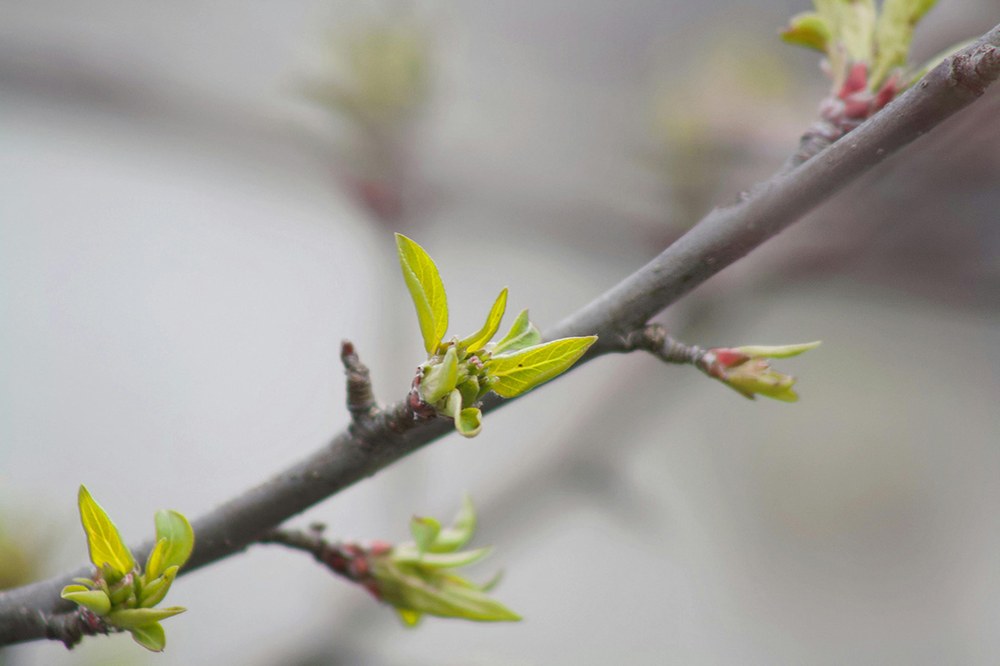Posted: March 27, 2025
What triggers plant growth, and what are the dangers of budding too early?

Photo by Matthias Cooper on Pexels.com
While we've had a lot of snow and ice in Pennsylvania this winter season, we haven't had consistent snow-covered ground and have already been through several freeze-thaw cycles in January and February that historically occurred more often in March and April (it's called "mud season" for a reason). While the bulbs are starting to come up, there is still a decent chance for winter weather, and, depending upon timing, could impact young leaves and flowers on trees.
Some level of green-up is occurring across the state. I've heard people talk about multiflora rose in central Pennsylvania starting to go. In my yard, the serviceberry buds are swelling and the red maple flowers are open in some places. But with nighttime hard freezes still in the forecast, there is a risk of early bud break, flower set, and leaf break. Late-season frosts can kill back those young structures. So, how do trees know when it's safe to start opening those flower or leaf buds?
Turns out it is a mix of chilling requirements, growing degree days, and photoperiod. Each species uses some combination of these three to trigger growth.
For all trees that lose their leaves for the cooler months and experience a period of dormancy, there is a minimum temperature that must be experienced for the spring warmth to trigger bud break. This chilling requirement varies according to species, but essentially is a minimum temperature requirement for a set amount of time for the species of trees native to a place. "Native to place" is an important concept as, for example, red maples in the southern US have adapted to a higher minimum winter temperature and earlier spring than their cousins in the northern US. This variation within species and to site is called "plasticity."
Warm spring temperatures can be an overriding driver of bud break to an extent. Growing degree days are the days above a certain minimum temperature threshold. Each species requires a certain number of degree days above their temperature threshold to trigger growth. Those who track when trees break bud are telling us, in comparison to historical records, bud break is occurring earlier than it used to in response to warmer spring conditions. Interestingly, there have been studies done in Concord, Massachusetts, using the writings of Henry David Thoreau (1817–1862) as a record for bud break to compare to today.
Day length, or photoperiod, is a check on the bud break system. Unseasonable warmth—but during the shorter days of early spring—may not trigger growth for those species with strong photoperiod requirements, helping to ensure they don't get burned by late frosts. The air may be warm, but it's not quite right, and our native species are regulated somewhat by day length.
Species that have weak chilling requirements and minimal photoperiod requirements leaf out early, increasing their resources for growth, increasing their distribution and abundance. This is the strategy of many of our successful invasive plant species. The "early green" in Pennsylvania’s forests is triggered by day length and early warmth, giving these invasive plants a competitive strategy against our native species, which have stronger chilling and longer photoperiod requirements.
Bud break, flowers, and leaf out for trees and plants (and events like migration, emergence from hibernation, breeding, and dispersal for animals) are part of the science of phenology. Phenology is the study of the annual timing of developmental events in the natural world. Tracking timing events in your area can enhance your understanding of your woods and contribute to larger scientific efforts about the changing natural world.
If you, too, are intrigued by the cues of nature, consider contributing to the National Phenology Network's Nature's Notebook or Project Budburst, and add your nature observations to the larger citizen science efforts.
Every spring, I remind myself to be patient with the trees. While we love to see the flowers and new growth of our native trees, they are more attuned to their site and less responsive to the warmth than we humans seem to be. And that understanding is an important part of our connection with the woods.
James C. Finley Center for Private Forests
Address
416 Forest Resources BuildingUniversity Park, PA 16802
- Email PrivateForests@psu.edu
- Office 814-863-0401
- Fax 814-865-6275
James C. Finley Center for Private Forests
Address
416 Forest Resources BuildingUniversity Park, PA 16802
- Email PrivateForests@psu.edu
- Office 814-863-0401
- Fax 814-865-6275

